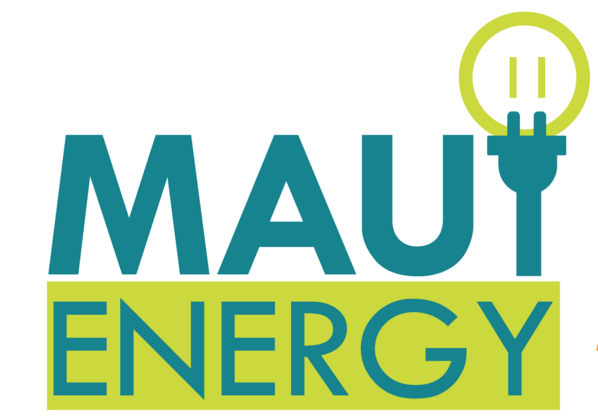
by HEC Team | Aug 3, 2015 | News
The Clean Power Plan is a Landmark Action to Protect Public Health, Reduce Energy Bills for Households and Businesses, Create American Jobs, and Bring Clean Power to Communities across the Country
Original Press Release
Today at the White House, President Obama and Environmental Protection Agency (EPA) Administrator Gina McCarthy will release the final Clean Power Plan, a historic step in the Obama Administration’s fight against climate change.
We have a moral obligation to leave our children a planet that’s not polluted or damaged. The effects of climate change are already being felt across the nation. In the past three decades, the percentage of Americans with asthma has more than doubled, and climate change is putting those Americans at greater risk of landing in the hospital. Extreme weather events – from more severe droughts and wildfires in the West to record heat waves – and sea level rise are hitting communities across the country. In fact, 14 of the 15 warmest years on record have all occurred in the first 15 years of this century and last year was the warmest year ever. The most vulnerable among us – including children, older adults, people with heart or lung disease, and people living in poverty – are most at risk from the impacts of climate change. Taking action now is critical.
The Clean Power Plan establishes the first-ever national standards to limit carbon pollution from power plants. We already set limits that protect public health by reducing soot and other toxic emissions, but until now, existing power plants, the largest source of carbon emissions in the United States, could release as much carbon pollution as they wanted.
The final Clean Power Plan sets flexible and achievable standards to reduce carbon dioxide emissions by 32 percent from 2005 levels by 2030, 9 percent more ambitious than the proposal. By setting carbon pollution reduction goals for power plants and enabling states to develop tailored implementation plans to meet those goals, the Clean Power Plan is a strong, flexible framework that will:
- Provide significant public health benefits – The Clean Power Plan, and other policies put in place to drive a cleaner energy sector, will reduce premature deaths from power plant emissions by nearly 90 percent in 2030 compared to 2005 and decrease the pollutants that contribute to the soot and smog and can lead to more asthma attacks in kids by more than 70 percent. The Clean Power Plan will also avoid up to 3,600 premature deaths, lead to 90,000 fewer asthma attacks in children, and prevent 300,000 missed work and school days.
- Create tens of thousands of jobs while ensuring grid reliability;
- Drive more aggressive investment in clean energy technologies than the proposed rule, resulting in 30 percent more renewable energy generation in 2030 and continuing to lower the costs of renewable energy.
- Save the average American family nearly $85 on their annual energy bill in 2030, reducing enough energy to power 30 million homes, and save consumers a total of $155 billion from 2020-2030;
Give a head start to wind and solar deployment and prioritize the deployment of energy efficiency improvements in low-income communities that need it most early in the program through a Clean Energy Incentive Program; and
- Continue American leadership on climate change by keeping us on track to meet the economy-wide emissions targets we have set, including the goal of reducing emissions to 17 percent below 2005 levels by 2020 and to 26-28 percent below 2005 levels by 2025.
KEY FEATURES OF THE CLEAN POWER PLAN
The final Clean Power Plan takes into account the unprecedented input EPA received through extensive outreach, including the 4 million comments that were submitted to the agency during the public comment period. The result is a fair, flexible program that will strengthen the fast-growing trend toward cleaner and lower-polluting American energy. The Clean Power Plan significantly reduces carbon pollution from the electric power sector while advancing clean energy innovation, development, and deployment. It ensures the U.S. will stay on a path of long-term clean energy investments that will maintain the reliability of our electric grid, promote affordable and clean energy for all Americans, and continue United States leadership on climate action. The Clean Power Plan:
- Provides Flexibility to States to Choose How to Meet Carbon Standards: EPA’s Clean Power Plan establishes carbon pollution standards for power plants, called carbon dioxide (CO2) emission performance rates. States develop and implement tailored plans to ensure that the power plants in their state meet these standards– either individually, together, or in combination with other measures like improvements in renewable energy and energy efficiency. The final rule provides more flexibility in how state plans can be designed and implemented, including: streamlined opportunities for states to include proven strategies like trading and demand-side energy efficiency in their plans, and allows states to develop “trading ready” plans to participate in “opt in” to an emission credit trading market with other states taking parallel approaches without the need for interstate agreements. All low-carbon electricity generation technologies, including renewables, energy efficiency, natural gas, nuclear and carbon capture and storage, can play a role in state plans.
- More Time for States Paired With Strong Incentives for Early Deployment of Clean Energy: State plans are due in September of 2016, but states that need more time can make an initial submission and request extensions of up to two years for final plan submission. The compliance averaging period begins in 2022 instead of 2020, and emission reductions are phased in on a gradual “glide path” to 2030. These provisions to give states and companies more time to prepare for compliance are paired with a new Clean Energy Incentive Program to drive deployment of renewable energy and low-income energy efficiency before 2022.
- Creates Jobs and Saves Money for Families and Businesses: The Clean Power Plan builds on the progress states, cities, and businesses and have been making for years. Since the beginning of 2010, the average cost of a solar electric system has dropped by half and wind is increasingly competitive nationwide. The Clean Power Plan will drive significant new investment in cleaner, more modern and more efficient technologies, creating tens of thousands of jobs. Under the Clean Power Plan, by 2030, renewables will account for 28 percent of our capacity, up from 22 percent in the proposed rule. Due to these improvements, the Clean Power Plan will save the average American nearly $85 on their energy bill in 2030, and save consumers a total of $155 billion through 2020-2030, reducing enough energy to power 30 million homes.
- Rewards States for Early Investment in Clean Energy, Focusing on Low-Income Communities: The Clean Power Plan establishes a Clean Energy Incentive Program that will drive additional early deployment of renewable energy and low-income energy efficiency. Under the program, credits for electricity generated from renewables in 2020 and 2021 will be awarded to projects that begin construction after participating states submit their final implementation plans. The program also prioritizes early investment in energy efficiency projects in low-income communities by the Federal government awarding these projects double the number of credits in 2020 and 2021. Taken together, these incentives will drive faster renewable energy deployment, further reduce technology costs, and lay the foundation for deep long-term cuts in carbon pollution. In addition, the Clean Energy Incentive Plan provides additional flexibility for states, and will increase the overall net benefits of the Clean Power Plan.
- Ensures Grid Reliability: The Clean Power Plan contains several important features to ensure grid reliability as we move to cleaner sources of power. In addition to giving states more time to develop implementation plans, starting compliance in 2022, and phasing in the targets over the decade, the rule requires states to address reliability in their state plans. The final rule also provides a “reliability safety valve” to address any reliability challenges that arise on a case-by-case basis. These measures are built on a framework that is inherently flexible in that it does not impose plant-specific requirements and provides states flexibility to smooth out their emission reductions over the period of the plan and across sources.
- Continues U.S. Leadership on Climate Change: The Clean Power Plan continues United States leadership on climate change. By driving emission reductions from power plants, the largest source of U.S. greenhouse gas emissions, the Clean Power Plan builds on prior Administration steps to reduce emissions, including historic investments to deploy clean energy technologies, standards to double the fuel economy of our cars and light trucks, and steps to reduce methane pollution. Taken together these measures put the United States on track to achieve the President’s near-term target to reduce emissions in the range of 17 percent below 2005 levels by 2020, and lay a strong foundation to deliver against our long-term target to reduce emissions 26 to 28 percent below 2005 levels by 2025. The release of the Clean Power Plan continues momentum towards international climate talks in Paris in December, building on announcements to-date of post-2020 targets by countries representing 70 percent of global energy based carbon emissions.
- Sets State Targets in a Way That Is Fair and Is Directly Responsive to Input from States, Utilities, and Stakeholders: In response to input from stakeholders, the final Clean Power Plan modifies the way that state targets are set by using an approach that better reflects the way the electricity grid operates, using updated information about the cost and availability of clean generation technologies, and establishing separate emission performance rates for all coal plants and all gas plants.
- Maintains Energy Efficiency as Key Compliance Tool: In addition to on-site efficiency and greater are reliance on low and zero carbon generation, the Clean Power Plan provides states with broad flexibility to design carbon reduction plans that include energy efficiency and other emission reduction strategies. EPA’s analysis shows that energy efficiency is expected to play a major role in meeting the state targets as a cost-effective and widely-available carbon reduction tool, saving enough energy to power 30 million homes and putting money back in ratepayers’ pockets.
- Requires States to Engage with Vulnerable Populations: The Clean Power Plan includes provisions that require states to meaningfully engage with low-income, minority, and tribal communities, as the states develop their plans. EPA also encourages states to engage with workers and their representatives in the utility and related sectors in developing their state plans.
- Includes a Proposed Federal Implementation Plan: EPA is also releasing a proposed federal plan today. This proposed plan will provide a model states can use in designing their plans, and when finalized, will be a backstop to ensure that the Clean Power Plan standards are met in every state.
Since the Clean Air Act became law more than 45 years ago with bipartisan support, the EPA has continued to protect the health of communities, in particular those vulnerable to the impacts of harmful air pollution, while the economy has continued to grow. In fact, since 1970, air pollution has decreased by nearly 70 percent while the economy has tripled in size. The Clean Power Plan builds on this progress, while providing states the flexibility and tools to transition to clean, reliable, and affordable electricity.
BUILDING ON PROGRESS
The Clean Power Plan builds on steps taken by the Administration, states, cities, and companies to move to cleaner sources of energy.Solar electricity generation has increased more than 20-fold since 2008, and electricity from wind has more than tripled. Efforts such as the following give us a strong head start in meeting the Clean Power Plan’s goals:
- 50 states with demand-side energy efficiency programs
- 37 states with renewable portfolio standards or goals
- 10 states with market-based greenhouse gas reduction programs
- 25 states with energy efficiency standards or goals
Today’s actions also build on a series of actions the Administration is taking through the President’s Climate Action Plan to reduce the dangerous levels of carbon pollution that are contributing to climate change, including:
- Standards for Light and Heavy-Duty Vehicles: Earlier this summer, the EPA and the Department of Transportation proposed the second phase of fuel efficiency and greenhouse gas standards for medium- and heavy-duty vehicles, which if finalized as proposed will reduce 1 billion tons of carbon pollution. The proposed standards build on the first phase of heavy-duty vehicle requirements and standards for light-duty vehicles issued during the President’s first term that will save Americans $1.7 trillion, reduce oil consumption by 2.2 million barrels per day by 2025, and slash greenhouse gas emissions by 6 billion metric tons through the lifetime of the program.
- Low Income Solar: Last month, the White House announced a new initiative to increase access to solar energy for all Americans, in particular low-and moderate income communities, and build a more inclusive workforce. The initiative will help families and businesses cut their energy bills through launching a National Community Solar Partnership to unlock access to solar for the nearly 50 percent of households and business that are renters or do not have adequate roof space to install solar systems and sets a goal to install 300 megawatts (MW) of renewable energy in federally subsidized housing by 2020. Through this initiative housing authorities, rural electric co-ops, power companies, and organizations in more than 20 states across the country committed to put in place more than 260 solar energy projects and philanthropic and impact investors, states, and cities are committed to invest $520 million to advance community solar and scale up solar and energy efficiency for low- and moderate- income households. The initiative also includes AmeriCorps funding to deploy solar and create jobs in underserved communities and a commitment from the solar industry to become the most diverse sector of the U.S. energy industry.
- Economy-Wide Measures to Reduce other Greenhouse Gases: EPA and other agencies are taking actions to cut methane emissions from oil and gas systems, landfills, coal mining, and agriculture through cost-effective voluntary actions and common-sense standards. At the same time, the U.S. Department of State is working to slash global emissions of potent industrial greenhouse gases, called hydrofluorocarbons (HFCs), through an amendment to the Montreal Protocol; EPA is cutting domestic HFC emissions through its Significant New Alternatives Policy (SNAP) program; and, the private sector has stepped up with commitments to cut global HFC emissions equivalent to 700 million metric tons of carbon pollution through 2025.
- Investing in Coal Communities, Workers, and Communities: In February, as part of the President’s FY 2016 budget, the Administration released the POWER+ Plan to invest in workers and jobs, address important legacy costs in coal country, and drive the development of coal technology. The Plan provides dedicated new resources for economic diversification, job creation, job training, and other employment services for workers and communities impacted by layoffs at coal mines and coal-fired power plants; includes unprecedented investments in the health and retirement security of mineworkers and their families and the accelerated clean-up of hazardous coal abandoned mine lands; and provides new tax incentives to support continued technology development and deployment of carbon capture, utilization, and sequestration technologies.
- Energy Efficiency Standards: DOE set a goal of reducing carbon pollution by 3 billion metric tons cumulatively by 2030 through energy conservation standards issued during this Administration. DOE has already finalized energy conservation standards for 29 categories of appliances and equipment, as well as a building code determination for commercial buildings. These measures will also cut consumers’ annual electricity bills by billions of dollars.
- Investing in Clean Energy: In June the White House announced more than $4 billion in private-sector commitments and executive actions to scale up investment in clean energy innovation, including launching a new Clean Energy Impact Investment Center at the U.S. Department of Energy (DOE) to make information about energy and climate programs at DOE and other government agencies accessible and more understandable to the public, including to mission-driven investors
by HEC Team | Jun 4, 2015 | News

The Economist published the attached timely article about energy trends, efficiencies, and the relationship between utilities and consumers. In light of our recent conference, it makes interesting reading.
Click here to read the article
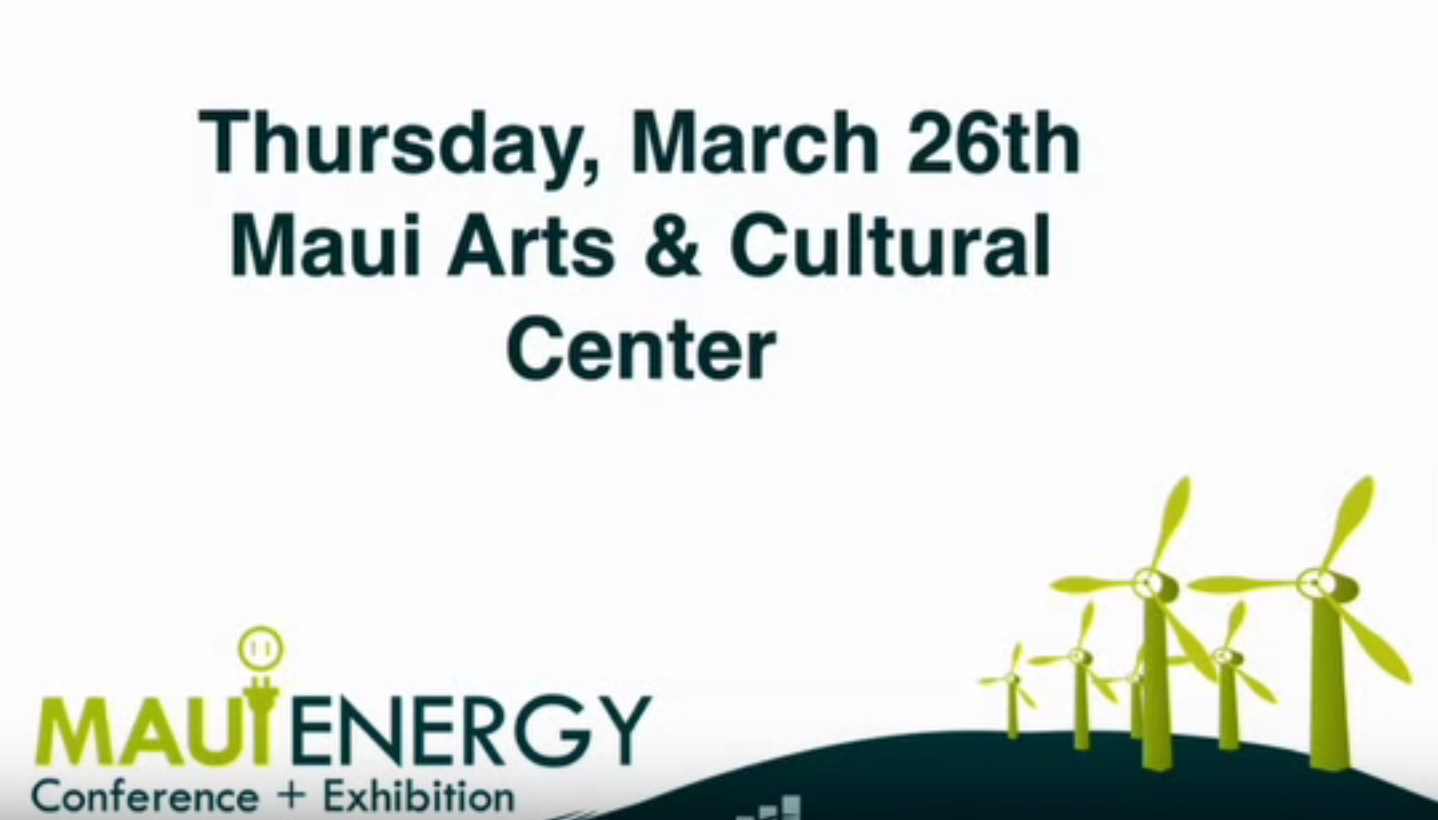
by HEC Team | May 13, 2015 | 2015, News
Aloha,
We are pleased to let you know that the videotaped proceedings are now available from the Conference.
If you missed the conference, watch it now on our YouTube channel. Watch Now!
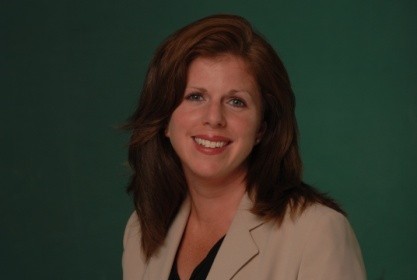
by HEC Team | Apr 7, 2015 | 2015, News
More than 30 percent of Maui’s energy needs, on average, are being met by renewable energy sources such as wind and rooftop photovoltaic (PV) systems, and the trend continues to rise, making Maui a national and global leader in the adoption of renewable energy. This was just one of the positive observations to emerge from the 2015 Maui Energy Conference + Exhibition that spanned two days at the Maui Arts & Culture Center last month. More than 300 energy industry leaders from Hawaii, the Mainland and Japan attended and shared ideas on how to better serve customers in today’s rapidly changing power generation and delivery environment.

Holly Benz
At the conference, Program Committee member Holly Benz of Schneider Corporation said: “All eyes are on Hawaii.” Benz said outsiders are continuing to closely watch the state and its work on energy issues. “There is a tremendous opportunity for Hawaii to lead, to test and to learn.” Keynote speakers Alan Oshiro, President of Hawaiian Electric Company and Eric Gleason, President of NextEra Energy Hawaii shared perspectives on the acquisition of Maui Electric’s parent company, HEI by NextEra and outlined the benefits that it can bring to customers and Hawaii. NextEra, the largest generator of wind and solar energy in North America, has announced its commitment to lower Hawaii’s high electricity costs.
One of the nine thought-provoking panels, “Focus on the Customer—Maui Style,” discussed proposed changes in Maui’s energy landscape, concluding that these must be transparent to residents and engaging for young people. “In my business,” Cathy Nobriga Kim, vice president of Maui Soda and Ice Works said, “energy is crucial.” When asked how businesses could be involved in renewable energy solutions for Maui, Kim observed that business involvement in pilot projects to develop renewable energy solutions are beneficial. Other panelists said that government and community leaders must step up to explain the changing energy landscape. Information provided to residents must be true and trustworthy; “There needs to be transparency,” one panelist said. The conference was hosted by the Maui Economic Development Board and the Mayor’s Office of Economic Development.
“There is a tremendous opportunity for Hawaii to lead, to test and to learn.” Holly Benz, Maui Energy Conference + Exhibition Program Committee member

by HEC Team | Apr 6, 2015 | 2015, News
The 2015 Maui Energy Conference saw more than 300 energy industry leaders from Hawaii, the Mainland and Japan exchanging ideas on how to better serve customers in today’s rapidly changing power generation and delivery environment.
In welcoming remarks, Mayor Alan Arakawa set out his goal for Maui County, which now gets 30 to 35 percent of its power from renewable energy sources, is to have 100 percent of its power generated by renewable sources. “It’s not just to save money,” he told conference attendees. “It is about freedom, self-sufficiency and sustainability.” In just a year, the cost of a barrel of oil has dropped from over $100 to around $50, Arakawa said. “These wild price swings are proof that as long as we import oil we are subject to forces beyond our control.”
Many of the conference attendees focused in on keynote addresses from Alan Oshima, President and CEO of Hawaiian Electric Company, and Eric Gleason, President of NextEra Energy Hawaii. They discussed how the proposed $2.6 billion Hawaiian Electric Industries-NextEra merger could benefit Hawaii with more development of renewable power resources, lower customer bills and improved service reliability.
Gleason told conference attendees that the merger provides a “very exciting opportunity” for Hawaii to “get off the addiction to oil” by developing its “world-class renewable energy resources.” Because its size and experience in renewable power development, NextEra brings a lot to the table in a merger with HECO. NextEra “has a lot of buying power,” and it has a track record of delivering projects on time and on budget, he told conference attendees. Oshima explained that the merger “really makes sense for Hawaii” as the islands’ utilities strive to be leaders and early adopters of renewable energy technology and development of natural resources. By 2030, HECO aims to draw 65 percent of its energy on Oahu from renewable resources, triple distributed power and lower power bills by 20 percent. To do so, “we’ve reorganized how we look at things in the company,” Oshima said. No longer primarily driven by electrical engineers, HECO’s direction also is being guided by customer service and government relations advisers. “Change can be exciting. Change can be fun, and change is necessary,” he explained.
Oshima told the conference that HECO is looking at liquefied natural gas, also known as LNG, as a cleaner fuel and a more stable energy source. The cost of buying oil for power generation accounts for about 50 percent of a customer’s bill, while it had been as much as 70 percent in the past, according to HECO. HECO would like to see fuel be a more stable expense for utility customers, Oshima said. Hawaii’s effort to incorporate intermittent, renewable energy is a challenge that will be faced by utilities nationwide, eventually, Oshima predicted. “We are experiencing these issues earlier than anyone else,” he noted. HECO customers are demanding smart-grid services and grid modernization, and “we have to listen to our customers,” Oshima said, adding that HECO needs to go beyond implementing technology and, instead, be at the forefront of technology, being an early adapter.
Gleason told conference attendees that NextEra began a transformation from “highly dependent” oil power generation to renewable energy 30 years ago with its subsidiary, Florida Power & Light. The utility serves 4.7 million customers in Florida and supplies half of the state’s power. Since 2001, FP&L has reduced its annual oil consumption from 40 million barrels to around 200,000 barrels. The reduced dependence on oil for power generation has saved the utility $7.5 million annually, a savings passed on to consumers, according to Gleason. FP&L has the lowest power rates in Florida, he added. NextEra has shown that “you can drive down costs and improve reliability and make things cleaner, all at the same time,” he said.
Gleason pledged that NextEra is committed to learning how to do business well in Hawaii, including the establishment of a board of residents to advise NextEra on how to do business in the islands. He told conference attendees that NextEra would continue HECO’s tradition of charitable giving to support the community. Also, for at least two years, there would be no involuntary layoffs of HECO employees who will retain all current compensation and benefits, he said. NextEra has nearly 14,000 employees in 27 states and Canada, and it is the largest generator of wind and solar power in the North America.
On the second day of the conference, a summary of day one was delivered by Holly Benz, Vice President of the Schneider Corp. and a member of the conference’s program committee, and by Jonathan Koehn, also a program committee member who works as the Regional Sustainability Coordinator for the City of Boulder, Colo. “All eyes are on Hawaii,” Benz said, stressing how Hawaii is a “postcard from the future” because it is at the leading edge of learning how to make the transition from on-demand, oil-fired power generation to as-available renewable power sources. “There is a tremendous opportunity for Hawaii to lead, to test and to learn,” she said. Koehn saw a lot of diversity and passion in the conversations energy conference speakers and participants were having as the conference wrapped up. Benz applauded the strong positions leaders and policy makers were expressing, and she was impressed by the level of engagement they were taking given the magnitude of the challenges ahead.
A presentation led by Maui Economic Development Board President and CEO Jeanne Skog reported the results of “MPower Maui: An Energy Conversation.” The study involved 90-minute interviews with 435 people and confirmed much of what’s already been believed as far as local community sentiment about electricity and energy alternatives. High energy prices were a dominant concern, but MPower participants also wanted energy alternatives. Their goals have evolved from wanting safe, reliable and cheap energy to calling for safe, reliable, affordable and environmentally safe options. Participants also were outspoken about environmental health issues as well as ensuring equity and affordability.
The final day of the energy conference offered optional Maui sustainability tours to Kaheawa Wind Farm, hosted by SunEdison, and the Smart Grid Demonstration Project—JumpSMARTMaui, hosted by Hitachi Ltd.
Conference attendees had the opportunity to “join the conversation” by downloading the Maui Energy Conference “App” by Zerista Inc., Facebook or Twitter. The proceedings were videotaped by Akaku Community TV and will be available for later viewing at: www.mauienergyconference.com. The conference was hosted by the Maui Economic Development Board and the Mayor’s Office of Economic Development.

by HEC Team | Mar 30, 2015 | 2015, News
Another successful Maui Energy Conference wrapped up on Friday, with a 15% increase in attendance over last year’s conference. The event, held at the Maui Arts & Cultural Center, featured more than 50 speakers and 325 participants. In addition to increased attendance, press coverage of the event also increased this year. Below is a list of articles published by the press.
Battery touted as aid for electricity generation – Star Advertiser
HEI CEO touts NextEra’s goals – Star Advertiser
‘There needs to be transparency’ – Maui News
The Most Unexpected Energy Conversation – Ililani Media
Energy Discussion Maui Style – Ililani Media
Maui Energy Conference attendance spikes 15% with merger talk front and center – Pacific Business News
Hawaii Gas reviewing proposals for $300M LNG project – Pacific Business News
Undersea cable project sparked NextEra Energy’s interest in buying Hawaiian Electric Co. – Pacific Business News
Maui plans to replace streetlights with LED lighting – Pacific Business News
Hawaiian Electric CEO: We Will Continue to Pursue LNG – Honolulu Civil Beat
NextEra President: We Don’t Have All the Answers – Honolulu Civil Beat
Mayor calls for 100 percent renewable energy for county – Maui News
Dip in oil prices slows Hawaiian Electric’s LNG project – Pacific Business News
Maui County islands can attain 100% renewable energy, mayor says – Pacific Business News
Few opt out of Hawaiian Electric smart meter pilot on Oahu – Pacific Business News
Hawaiian Electric must be out front in technology, Oshima tells Maui Energy Conference – Pacific Business News
Exploring energy through customers’ eyes – Pacific Business News
Hawaiian Electric, NextEra Energy execs to keynote Maui Energy Conference in March – Pacific Business News
Hawaiian Electric Cos. signs on as title sponsor for Maui energy conference – Pacific Business News
NEWS: Hawaii’s Advanced Energy “Postcard From the Future” – Advanced Energy Perspectives
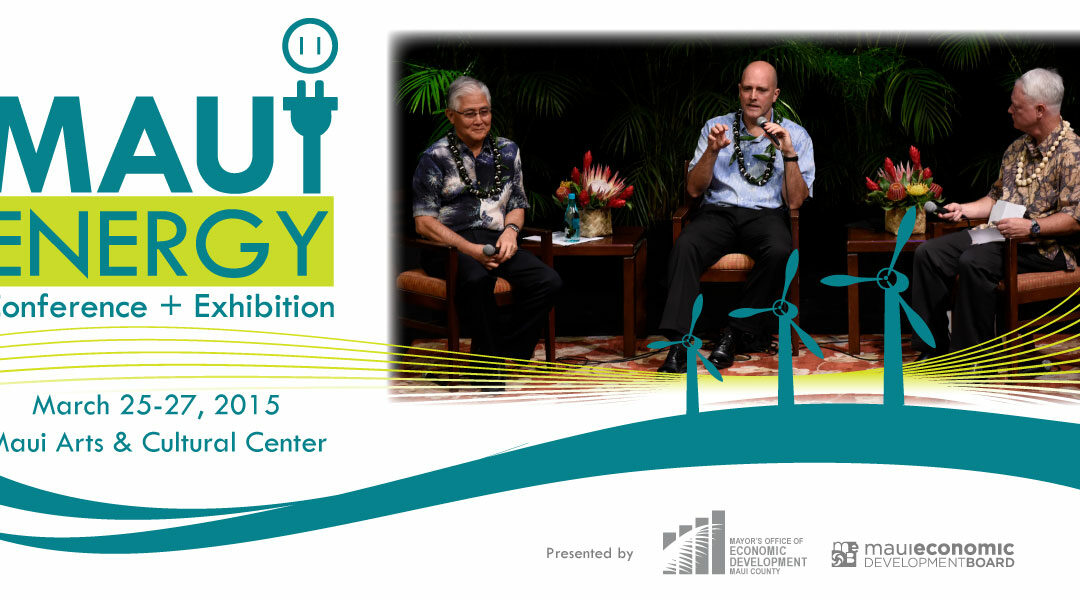
by HEC Team | Mar 28, 2015 | 2015, Past Conferences
A Focus on the Customer
Press Coverage of the 2015 Maui Energy Conference
PROGRAM

Download the Program Booklet
PROCEEDINGS
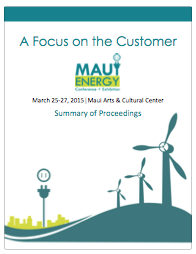
Download the Proceedings
PRESENTATIONS
Day 1 | Wednesday, March 25, 2015
NEXTERA AND HAWAIIAN ELECTRIC: TOGETHER, FOCUSED ON THE CUSTOMER
Introduction by Doug McLeod, Chair, Conference Program Committee
Alan Oshima, President & CEO, Hawaiian Electric Company
Eric Gleason, President, NextEra Energy Hawaii
SESSION 1: UNDERSTANDING THE EVOLVING ROLE OF THE CUSTOMER IN A BROADER CONTEXT
Jonathan Koehn, Regional Sustainability Coordinator, City of Boulder, Moderator
Henry Curtis, Executive Director, Life of the Land
John Farrell, Director, Democratic Energy, Institute for Local Self-Reliance
S. David Freeman, American Engineer, Attorney, and Author
SESSION 2: THE CUSTOMER OF THE 21ST CENTURY
Jay Griffin, Chief of Policy and Research, Hawaii Public Utilities Commission, Moderator
Neil “Dutch” Kuyper, Chief Executive Officer, Parker Ranch, Inc.
Hunter Lovins, President, Natural Capitalism Solutions
Justin McCurnin, Vice President & General Manager, Smart Grid Solutions, Honeywell
Jon Yoshimura, Director of Policy and Electricity Markets, SolarCity
SESSION 3: ARE WE SEEING WHAT THEY’RE SEEING: CUSTOMER PERCEPTIONS ON ENERGY
MPowerMaui: An Energy Conversation A Presentation of Results
Jeanne Unemori Skog, President & CEO, Maui Economic Development Board, Inc.
Fern Tiger, Principal and Creative Director, Fern Tiger Associates, Moderator
David Bissell, President & CEO, Kauai Island Utility Cooperative
Jeff Mikulina, Executive Director, Blue Planet Foundation
Will Rolston, Energy Coordinator, County of Hawaii
Jeanne Unemori Skog, President & CEO, Maui Economic Development Board, Inc.
SESSION 4: ADVANCING TOWARD GRID MODERNIZATION MEETING CUSTOMER NEEDS
Maurice Kaya, Program Director, Energy Excelerator, Pacific International Center for High Technology Research, Moderator
Jim Alberts, Senior Vice President, Customer Service, Hawaiian Electric Company
John Cooper, U.S. Business Development Manager, Business Transformation & Engineering Solutions, Siemens Industry, Inc.
Tad Glauthier, Vice President, Hawaii Operations, STEM Inc.
Joseph Boivin, Senior Vice President, Business Development & Corporate Affairs, Hawaii Gas
SESSION 5: THE GROWTH OF DISTRIBUTION GENERATION – GOOD OR BAD FOR THE CUSTOMER?
Sebastian “Bash” Nola, Utility Consultant, Moderator
Mark Duda, President, Hawaii PV Coalition, and Founder, RevoluSun LLC
Dan Girard, Director, Renewable Energy and Energy Storage Business Development, S&C Electric Company
Mathew McNeff, Manager, Engineering, Maui Electric Company
Richard Rocheleau, Director, Hawaii Natural Energy Institute, University of Hawaii
Day 2 | Thursday, March 26, 2015
FOCUS ON THE CUSTOMER – MAUI STYLE
Frank De Rego Jr., Business Development Projects Director, Maui Economic Development Board, Inc., Moderator
Irene Bowie, Director, Maui Tomorrow
Carl Freedman, Owner and Principal, Haiku Design and Analysis
Kelly King, Vice President & Chief Communications Officer, Pacific Biodiesel, Inc.
Cathy Nobriga Kim, Vice President, Maui Soda and Ice Works
CLIMATE AFFORDABILITY: GETTING TO GREEN AND KEEPING THE LIGHTS ON
Mark Toney, Executive Director, The Utility Reform Network Slapping
HOW STATE ENERGY POLICY WILL HELP THE CUSTOMER
Luis Salaveria, Director, Department of Business, Economic Development & Tourism, State of Hawaii
SESSION 6: HOW CAN THE CUSTOMER BECOME AN ACTIVE PARTICIPANT IN THE ENERGY LANDSCAPE
Holly Benz, Vice President, Consulting, Schneider Electric, Moderator
Deborah Kimberly, Vice President, Customer Energy Solutions, Austin Energy
Matt O’Keefe, Director, Market Development and Regulatory Affairs, Opower
Ray Starling, Program Director, Hawaii Energy Conservation and Efficiency Program
Kimberly Williams, Co-Founder and Managing Director, Solar Fuels Institute
SESSION 7: THE CHANGING REGULATORY COMPACT – THE CUSTOMER, THE UTILITY, THE REGULATOR
Joe Viola, Vice President, Regulatory Affairs, Hawaiian Electric Company, Moderator
Lorraine Akiba, Commissioner, Hawaii Public Utilities Commission
Jim Alberts, Senior VP Customer Service, Hawaiian Electric Company
Kyle Datta, General Partner, Ulupono Initiative
Raya Salter, Senior Utility Advocate, Natural Resources Defense Council
SOCIAL INNOVATION: OUR VISION FOR THE CUSTOMER
Yasuo Tanabe, Vice President & Executive Officer, Government and External Relations, Hitachi, Ltd.
SESSION 8: CONSUMER PROTECTION: WHO’S LOOKING OUT FOR THE CUSTOMER?
Thomas Gorak, Chief Counsel, Public Utilities Commission, State of Hawaii, Moderator
John Howat, Senior Policy Analyst, National Consumer Law Center
Michael Jung, Policy Director, Silver Spring Network
Jeffrey Ono, Executive Director, Division of Consumer Advocacy, Department of Commerce and Consumers Affairs, State of Hawaii
Mark Toney, Executive Director, The Utility Reform Network
ENGAGING CUSTOMERS IN A FRESH, NEW WAY
Deborah Kimberly, Vice President, Customer Energy Solutions, Austin Energy
KEY TAKEAWAYS: WHERE DO WE GO FROM HERE?
Constance Lau, Chairman & Chief Executive Officer, Hawaiian Electric Industries, Inc.
REDEFINING THE CUSTOMER’S ROLE IN THE UTILITY OF THE FUTURE
Lorraine Akiba, Commissioner, Hawaii Public Utilities Commission, Moderator
Neil “Dutch” Kuyper, Chief Executive Officer, Parker Ranch
H. Ray Starling, Program Director, Hawaii Energy
Bob Lachenmayer, Smart Cities Manager, Schneider Electric
Ben Springer, Senior Associate, Energy Futures Coalition
HOW WILL THE ELECTRIC SYSTEM CHANGE IN THE FUTURE?
Bob Lachenmayer, Smart Cities Manager, Schneider Electric, Moderator
Ron Binz, Former Chair, Colorado Public Utilities Commission
L. Hunter Lovins, President, Natural Capitalism Solutions
Richard Rosenblum, Chief Executive Officer, Hawaiian Electric
Ben York, Sr. Project Engineer, Electric Power Research Institute
Kyle Datta, General Partner, Ulupono Initiative
HAWAII’S UNIQUE PLACE IN THE EMERGING ENERGY TRANSFORMATION
Constance Lau, President and Chief Executive Officer, Hawaiian Electric Industries Inc.
CLOSING REMARKS
Hermina Morita, Chair, Hawaii Public Utilities Commission
VIDEOS
View the conference videos on the Maui Energy Conference YouTube channel, or click on the thumbnails below.
Wednesday, March 25
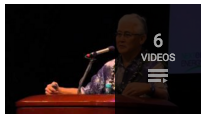
Thursday, March 26
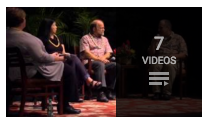

by HEC Team | Mar 13, 2015 | 2015, News
A glimpse into Hawaii’s historic, proposed energy merger will be available at the upcoming Maui Energy Conference and Exhibition.
Two of the major players in the proposed merger of Hawaiian Electric Co. and NextEra Energy are delivering keynote addresses on the conference’s opening day on March 25, at the Maui Arts & Cultural Center.
Eric Gleason, president of NextEra Energy Transmission LLC, and Alan Oshima, president and CEO of HECO, will help launch the three-day conference set for March 25-27.
In December, the companies announced that NextEra would buy HEI in a 4.3 billion dollar acquisition deal. The proposed absorption of HEI into NextEra still needs approval of the Hawaii Public Utilities Commission.
Connie Lau, president and chief executive officer of Hawaiian Electric Industries, has described the merger as a “transformational opportunity” for Hawaii’s electric utilities to accelerate the shift away from traditional diesel-powered turbines to clean energy. Lau is also speaking at the conference on its second day.
NextEra is North America’s largest generator of wind and solar power. Wind and solar energy are both abundant but to a great extent not yet harnessed in Hawaii.
Gleason has said that NextEra has invested billions in clean energy development and has the expertise to bring that transformation to Hawaii. The company is roughly 14 times larger than Hawaiian Electric in terms of its earnings and total assets. This gives NextEra the capability to bring currently less-expensive liquefied natural gas to Hawaii—as an alternative to diesel fuel—while incorporating distributed solar and wind power alternatives.
The energy merger players and attendees at the conference will explore the evolving role of the electric utility through the lens of the customer. In a variety of sessions, national experts will discuss emerging trends in the electric utility industry and public policy that will shape customer choices including customer protection and engagement, renewable energy integration, microgrids, and demand response programs.
In its debut last year, the Maui Energy Conference drew industry, government and private leaders not just from Hawaii, but also places such as Colorado, California and even Japan. “Interests in the energy field goes beyond our shores,” said Jeanne Skog, President & CEO from Maui Economic Development Board. “This event features a variety of speakers actively engaged in electric utilities, renewable energy initiatives and business development.” With the support of a host of corporate partners, MEDB and the County of Maui are presenting the event.
The exhibition piece of the conference gives networking opportunities to participants who want to generate business, or connect and collaborate to address common issues and concerns.
Individuals with questions or interests in energy could also find the three-day professional conference compelling. Day two of the conference, for example, offers sessions with panelists speaking about “Consumer Protection: Who’s Looking Out for the Customer?” and “How can the Customer Become an Active Participant in the Energy Landscape?”
All together, the conference program highlights include eight breakout sessions with topics including: “The Customer of the 21st Century”; “Are We Seeing What They’re Seeing: Customer Perceptions on Energy”; “Advancing Toward Grid Modernization: Meeting Customer Needs”; “The Growth of Distribution Generation – Good or Bad for the Customer?”
The conference’s third day will move outdoors with two optional Maui Sustainability Mobile Workshops—a tour of Kaheawa Wind Farm and a tour of the Smart Grid Demonstration Project, JumpSMARTMaui, hosted by Hitachi Ltd.
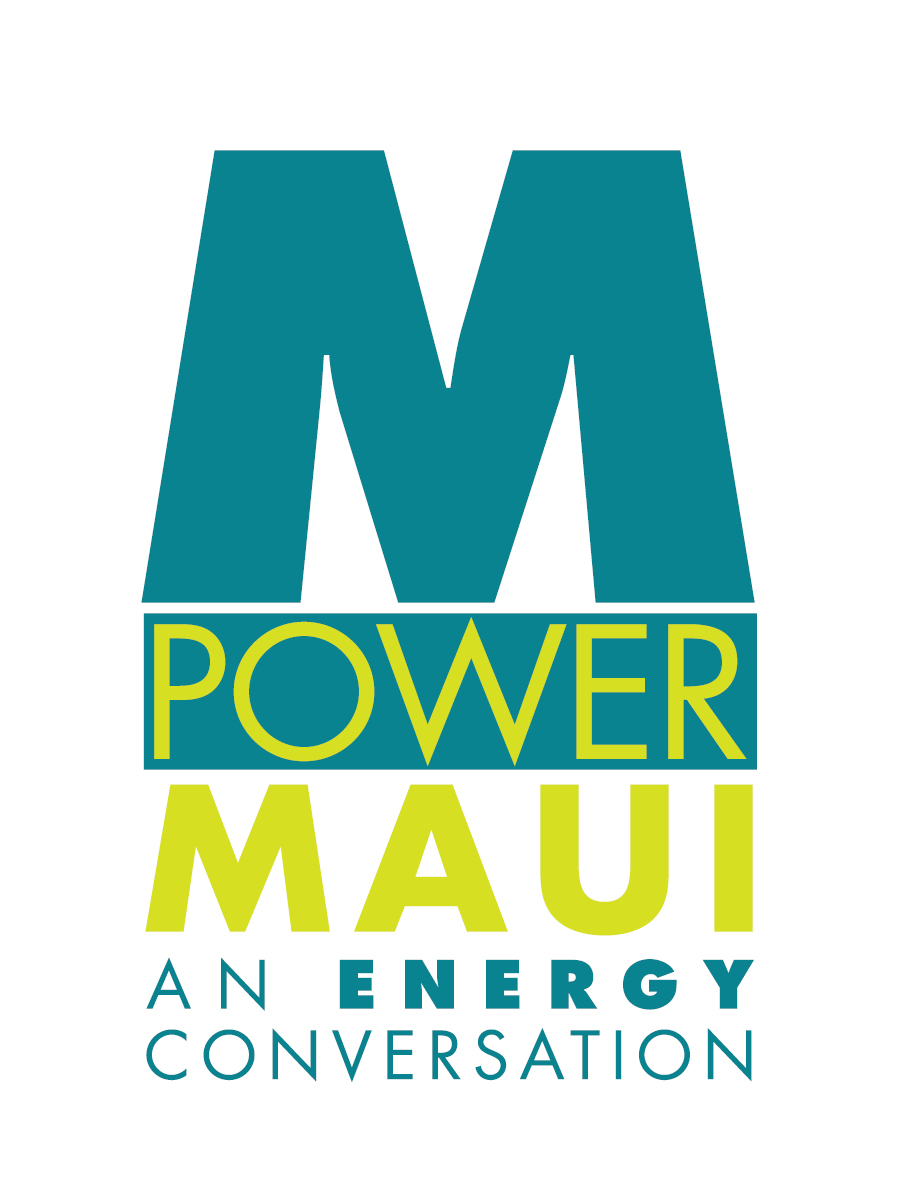
by HEC Team | Jan 29, 2015 | MPowerMaui, News
 Maui Economic Development Board (MEDB) is currently seeking volunteers from the community to share their priorities and values about energy on Maui – today and in the future – as part of a project called “MPowerMaui: An Energy Conversation”.
Maui Economic Development Board (MEDB) is currently seeking volunteers from the community to share their priorities and values about energy on Maui – today and in the future – as part of a project called “MPowerMaui: An Energy Conversation”.
The public is encouraged to sign up and participate in small group sessions which will be held in the entire month of February. These 90-minute sessions are designed to be engaging, interesting, and informative. “MPowerMaui features the interactive kind of format used in the Focus Maui Nui visioning process that produced lively discussions and thoughtful responses from our community,” said Jeanne Skog, MEDB President & CEO. Activities will enable participants to learn more about energy, to think about their own actions related to energy, to prioritize issues, to consider what actions they would or would not support, and to develop messages for decision makers.
Interested participants may either host a session at their company or organization by bringing together 12-15 individuals and a MEDB representative will run the session, or individuals can sign up for a session that MEDB organizes.
The results of these MPowerMaui conversations will be presented at the “Maui Energy Conference” in to be held on March 25 and 26, 2015.
“This opportunity for public conversation is critical as it can have an impact on the future of our island,” said Skog. “By joining in this conversation, participants will be helping to bring the public’s voice to the table in front of decision makers and community stakeholders as actions are determined to create a ‘green’ energy future for Maui.”
The MPowerMaui project is presented by the Maui Economic Development Board with sponsorship from the County of Maui Mayor’s Office of Economic Development; State Department of Business, Economic Development & Tourism (DBEDT) Energy Office; and the UH Hawaii Natural Energy Institute (HNEI).
To sign up to participate, please call 875-2336.

by HEC Team | Jan 29, 2015 | 2015, News
With island consumers paying more than double the national average per kilowatt hour for electricity, the second Maui Energy Conference + Exhibition comes at a time when Hawaii is seeing a revolutionary shift to renewable energy resources. The conference, presented by the County of Maui in partnership with Maui Economic Development Board, will be held March 25-27 at the Maui Arts & Cultural Center. The event is expected to draw individuals and businesses from across the state and the country.
At the inaugural 2014 conference, more than 200 recognized policy makers from state and federal government and the private sector gathered to talk candidly about the country’s changing energy landscape and its implications for power utilities and consumers. This time around, the 2015 event promises to explore the evolving role of the electric utility through the lens of the customer. Nationally recognized experts have been invited to speak about emerging trends in the electric utility industry and public policy shaping customer choices including customer engagement programs, distributed generation, microgrids, demand-response programs and renewables integration.
NextEra Energy Transmission President Eric Gleason and HECO President and CEO Alan Oshima have been tapped to give keynote remarks on the opening day of the conference. Hawaiian Electric and the Florida-based NextEra Energy announced a $4.3 billion merger late last year. The conference will also feature multiple sessions with a variety of panelists talking about a range of subjects from meeting the customer’s needs to both self-generate and manage electricity usage to protecting consumers in the new energy/customer choice paradigm. The conference is also offering sponsorship opportunities for companies and exhibit spaces for public and private groups to display products and services. An optional Maui Sustainability Mobile Workshop featuring the Smart Grid Demonstration Project, JumpSmartMaui, will be held on the final day of the conference. Conference fee is $395 prior to Feb. 15; $495 after Feb. 15; and $525 on site. The fee covers admittance to general sessions, exhibit venue, networking exhibit reception, continental breakfast and lunch for two days, and conference materials.












